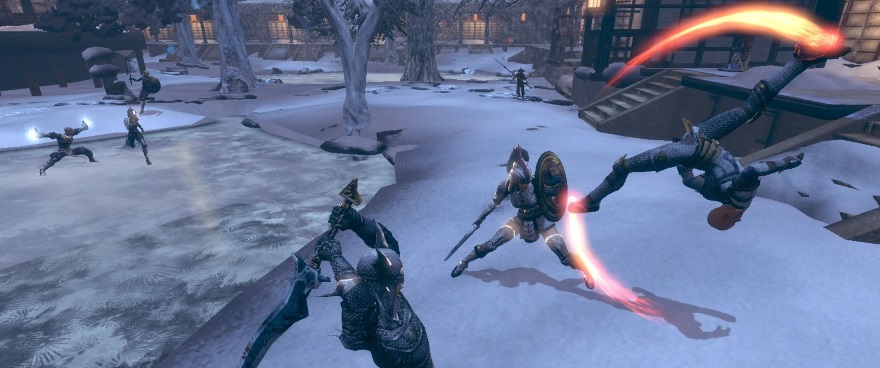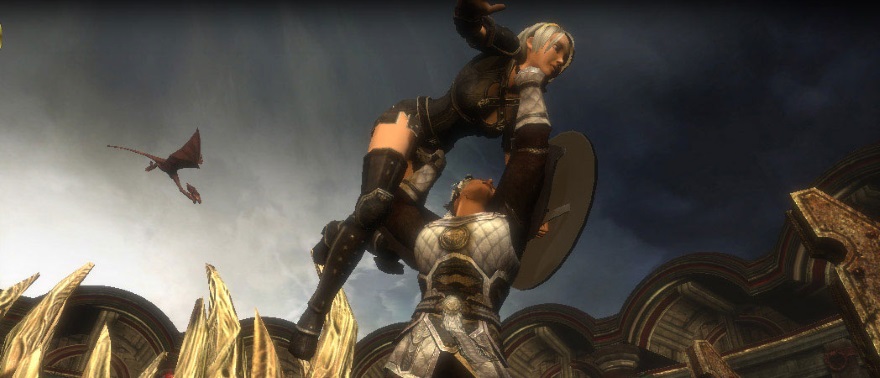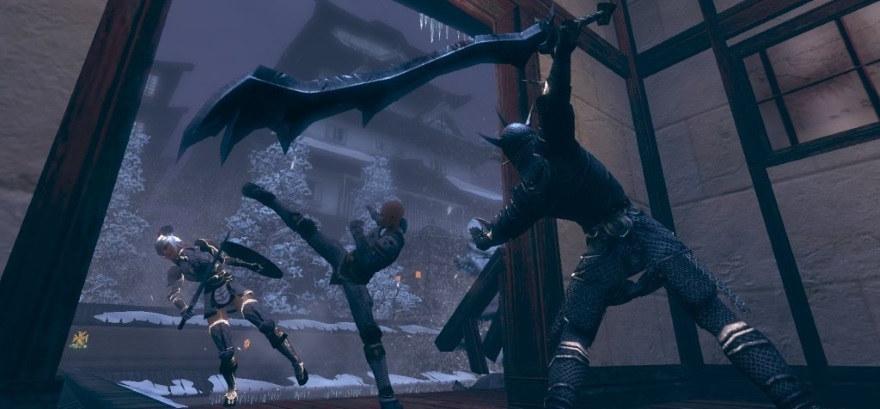
Back in 1997, Australian game developer Auran arrived onto the scene with the real-time strategy title Dark Reign. While it wasn’t exactly Command & Conquer or Warcraft, the game sold over 685,000 copies and was a strong success for the fledgling studio.
After developing another Dark Reigns title, Auran moved on to train simulators for a while and made some serious bank from that. Flush with cash, by the mid-2000s the studio felt a need to diversify, and so it turned its eyes to the then-growing field of MMORPGs.
Auran’s entry into the genre, Fury, would become the most expensive Australian video game ever made at $15 million. Yet there’s a good reason why you might have never heard of this MMO: Fury was a flash-in-the-pan phenomenon, here one day and gone the next. In this edition of The Game Archaeologist, we’ll look at one of the shortest-lived MMOs of all time.

Hardcore… to the MAX
It seems like MMORPG history is littered with development studios who assumed that there was a much larger crowd out there hungering for cutthroat, truly hardcore PvP. Auran was no different in this regard, as the studio promised that Fury would be the best player vs. player title on the market. In fact, Fury was banking so hard on this that it only only contained PvP content, shutting the door on the PvE market.
“Auran had identified a niche opportunity in the MMOG market — hardcore, competitive PvP gamers who were somewhat dissatisfied with the current major MMOGs,” wrote John Banks in his book Co-creating Videogames. “These players were interested in playing MMOG-style combat games as a form of intensely competitive, team-based e-sports.”
Indeed, this was a stripped-down MMO that lacked many of the broader elements found in other games, like storylines, an overworld, and quests. Instead, it was all about smashing similarly ranked players together again… and again… and again.
In addition to the PvP-centric focus, Fury’s hook to draw gamers in was that the title purported to be far less grindy and tedious than your average MMO. A rather unorthodox (and slightly graphic) ad was authorized to capitalize on this approach, while a $1 million “Unleash the Fury” tournament attempted to draw in the PvP crowd.
All in all, Fury didn’t sound like the worst idea ever, especially when you saw that it was trying to offer a much deeper RPG system for a competitive multiplayer environment. The game’s combat was much faster paced than MMO players were typically used to seeing, with most skills and spells firing off instantly (and often without a cooldown) rather than requiring a cast time.
“Taking the brightest elements emblazoned in the hearts of MMO fans and combining them with traditional RPG gameplay, Fury has culminated in the ultimate competitive online RPG,” said the game’s publisher. “Advanced combat, in-depth character advancement and teamwork mixed with fast paced and diverse game types make up the core of Fury’s gameplay. The dynamic cycle lets you fight, earn rewards and customize your avatar with a richness and depth never before seen or attempted.”

A blip on history’s radar
Fury launched on October 16th, 2007, as a $50 buy-to-play title with an optional subscription. Right away the developer knew that the game was in trouble. The reviews coming in painted this as a middle-of-the-road title that would satisfy neither PvP nor MMO player looking for the next best thing. The Metacritic score of 55% landed with a thud and many gamers avoided the game like the plague.
To be fair, a few outlets and reviewers did enjoy the game’s action and hinted that the title had untapped potential. But “potential” wasn’t enough for a game where the studio needed a certain number of people to show up in order to be the content.
What’s somewhat amusing (if worrysome) was that the game’s CEO even admitted back in August that Fury might not “pop big” among the MMO crowd, signifying that there were doubts of Fury’s initial release.
No sales numbers nor player population was ever revealed for the game, but by all indications, they were not good at all.

Fury leashed
The time was up for Auran. What was once one of Australia’s largest game development studios fell into voluntary administration by September 2007. Poor sales of Fury was cited as the reason for the move. There was an attempt to keep Fury going, especially in other markets, but the $50 cost of entry for the product and the poor reviews made this all but impossible. By early December, news outlets were reporting that Fury had proven to be a “financial disaster” for Auran.
As developers were laid off left and right, Auran threw a desperate Hail Mary to keep the game afloat. In December 2007 it attempted to switch the game over to the then-new free-to-play model. This model would, of course, go on to be very successful with titles like Dungeons and Dragons Online, but it failed to help Fury gain the critical mass it needed to sustain its income and development.
In August 2008, it all came to an end. Following the previous year’s layoff of the entire staff of 70 developers, Auran CEO Tony Hilliam dished out the bad news he said, “We have reached our time limit to find a solution that would help us keep the Fury servers open. Sadly, no solution has been found and so we have no alternative than to shut the servers.”
From launch to shutdown, Fury lasted all of 10 months.
The fall of Fury is a parable for the modern age of MMOs, where so many titles are banking hard on PvP to be a huge draw. Perhaps these projects should take a word of warning from the underlying assumptions that Auran made on the market.
“As I said many times before, we need to be much better than the competition to have a chance of succeeding,” Hilliam said in 2008. “We gave it everything we had and history now judges that it still wasn’t good enough.”
 Believe it or not, MMOs did exist prior to World of Warcraft! Every two weeks, The Game Archaeologist looks back at classic online games and their history to learn a thing or two about where the industry came from… and where it might be heading.
Believe it or not, MMOs did exist prior to World of Warcraft! Every two weeks, The Game Archaeologist looks back at classic online games and their history to learn a thing or two about where the industry came from… and where it might be heading.













